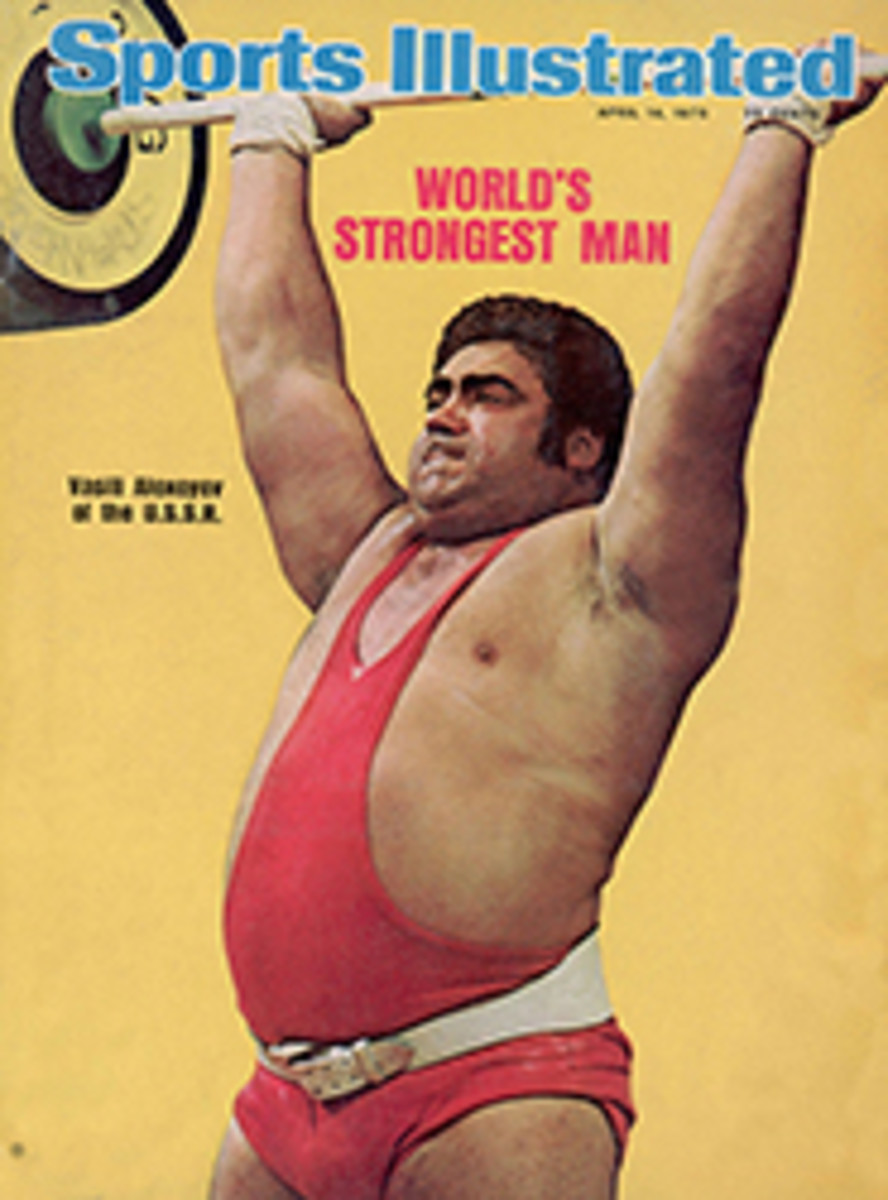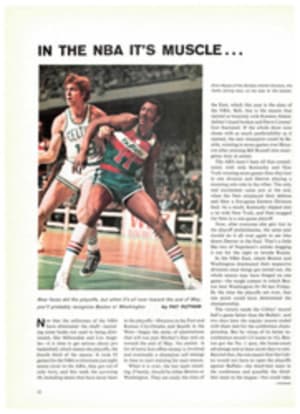
CLAY BIRDS SOAR LIKE WILD BIRDS TO BAFFLE SHOOTERS ON A GROUSE WALK
The atmosphere at James L. Cox' English Grouse Walk is very English indeed, which makes its location on the eastern edge of the Pennsylvania Dutch country all the more incongruous. Tucked away amidst the manicured fields and picture-book farms of its Amish neighbors, surrounded by whitewashed fences and gray stone walls, Cox' place seems transplanted from another world. Mallards bob on the pond in front of the 17th-century house, pheasants saunter along the winding drive, and in the evening deer emerge from shadowy woodlands to feed in rich and rolling meadows. In contrast to the game which thrives on Cox' 240 acres in Chester County, the grouse on his Grouse Walk are neither alive nor feathered.
A grouse walk, as Cox learned several years ago at the famed Holland & Holland Shooting School outside London, is an old but little-known sport that combines target shooting with good fellowship and a brisk walk in the country—a combination most sportsmen find irresistible. The "grouse" are clay birds released two at a time from mechanical traps at 25 separate shooting stations. Good fellowship is assured because the sport is always shot in pairs—hence the two birds at each station—and in company with Cox or an assistant who triggers the traps and keeps score. The course winds up and down hills, through woods and brush, and takes about an hour and a half to cover on foot.
At each station the trap is concealed and may be behind the shooters, in front of them or on either side. The birds are released simultaneously, traveling at about 70-degree angles to each other. The shooter on the left takes the left bird, the shooter on the right, the right bird. Depending upon the location and set of each trap, targets may soar over the shooters' shoulders, explode virtually from under their feet, cross swiftly from side to side, skim erratically along the horizon or on occasion come winging in head on. "Every shot that nature offers is reproduced here," Cox says, "along with a few she doesn't yet know."
The birds travel faster than in American trap and skeet, and sometimes at angles foreign to either sport. On a windless, bluebird day they can test the skills of the most accomplished shot. Add wind, weather and fading winter light and even the pros learn humility.
Each shooter has two chances at his bird. If he hits it with the first shot and his partner's bird is still in the air, he can try for that, too—no mean feat.
A shooter of average ability can expect to break anywhere from 14 to 17 birds the first time around. "It helps to know the course," Cox says, "just as familiarity with the course helps in golf. But familiarity cannot make up for the variables of weather, wind and optics. Nobody ever complains about being bored. I've probably shot this course several hundred times, yet the birds still fool me. And I still miss a few."
For those who miss too many, Cox runs a shooting school on his grounds Saturdays from 10 to 12. A two-hour lesson for from one to five shooters costs $20 per person, including shells. The Grouse Walk is a membership deal ($50 annually plus $12.50 per person per round, including shells) but non-members are always welcome to shoot an introductory round at members' rates.
To compensate for variations in skill, shooters who average fewer than 20 out of 25 targets are classified in what Cox calls Phase I. This permits them to assume a ready-to-shoot position on station, and to call "pull" for release of targets. Shooters breaking 20 to 22 birds advance to Phase II. Here targets are not called but are released without warning at any point within 30 feet of the station. Phase III is strictly for hot shots. Shooting conditions are identical to Phase II but shells as well as hits are counted. Top individual score is 25 birds with 25 shells. Any gauge shotgun in any choke is suitable although most shooters prefer 12-gauge field guns.
A former Air Force pilot, Cox flirted with several occupations before becoming a sporting-goods dealer. He now has shops in Paoli and Bryn Mawr. A tennis player, skin diver, fly fisherman, skier and superb shot, he is his own best customer. Until three years ago he also ran a game preserve. His visit to England put an end to that venture. The Holland & Holland Grouse Walk intrigued him because of the shooting challenge it offered and because, on his more spacious grounds, it seemed a perfect combination of outdoor sport and exercise with minimum expense and operating demands. He returned home, got rid of his birds, turned the chukar house into an office and, with the help of his two sons, started laying out the course.
"Every season has something to offer," says Cox. "In spring the dogwood are in bloom. In fall the colors are spectacular. And winter, well, it's hard to imagine a prettier place in England or America." Few who have been there would disagree. To see for yourself, contact James L. Cox, Rt. 2, Honey Brook, Pa. 19344. Tel: 215-273-3840 or 644-9325.

